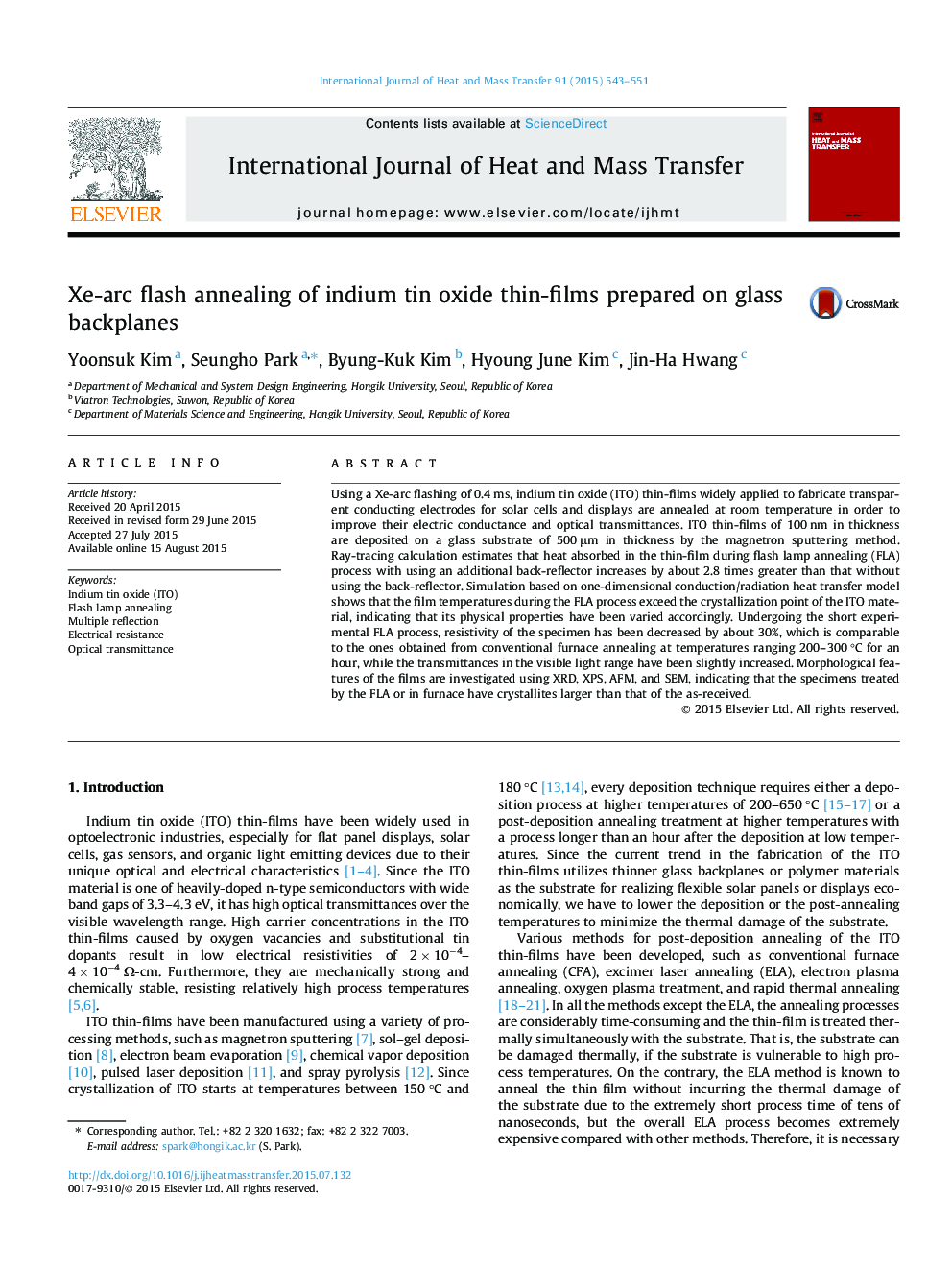| Article ID | Journal | Published Year | Pages | File Type |
|---|---|---|---|---|
| 7056265 | International Journal of Heat and Mass Transfer | 2015 | 9 Pages |
Abstract
Using a Xe-arc flashing of 0.4 ms, indium tin oxide (ITO) thin-films widely applied to fabricate transparent conducting electrodes for solar cells and displays are annealed at room temperature in order to improve their electric conductance and optical transmittances. ITO thin-films of 100 nm in thickness are deposited on a glass substrate of 500 μm in thickness by the magnetron sputtering method. Ray-tracing calculation estimates that heat absorbed in the thin-film during flash lamp annealing (FLA) process with using an additional back-reflector increases by about 2.8 times greater than that without using the back-reflector. Simulation based on one-dimensional conduction/radiation heat transfer model shows that the film temperatures during the FLA process exceed the crystallization point of the ITO material, indicating that its physical properties have been varied accordingly. Undergoing the short experimental FLA process, resistivity of the specimen has been decreased by about 30%, which is comparable to the ones obtained from conventional furnace annealing at temperatures ranging 200-300 °C for an hour, while the transmittances in the visible light range have been slightly increased. Morphological features of the films are investigated using XRD, XPS, AFM, and SEM, indicating that the specimens treated by the FLA or in furnace have crystallites larger than that of the as-received.
Keywords
Related Topics
Physical Sciences and Engineering
Chemical Engineering
Fluid Flow and Transfer Processes
Authors
Yoonsuk Kim, Seungho Park, Byung-Kuk Kim, Hyoung June Kim, Jin-Ha Hwang,
